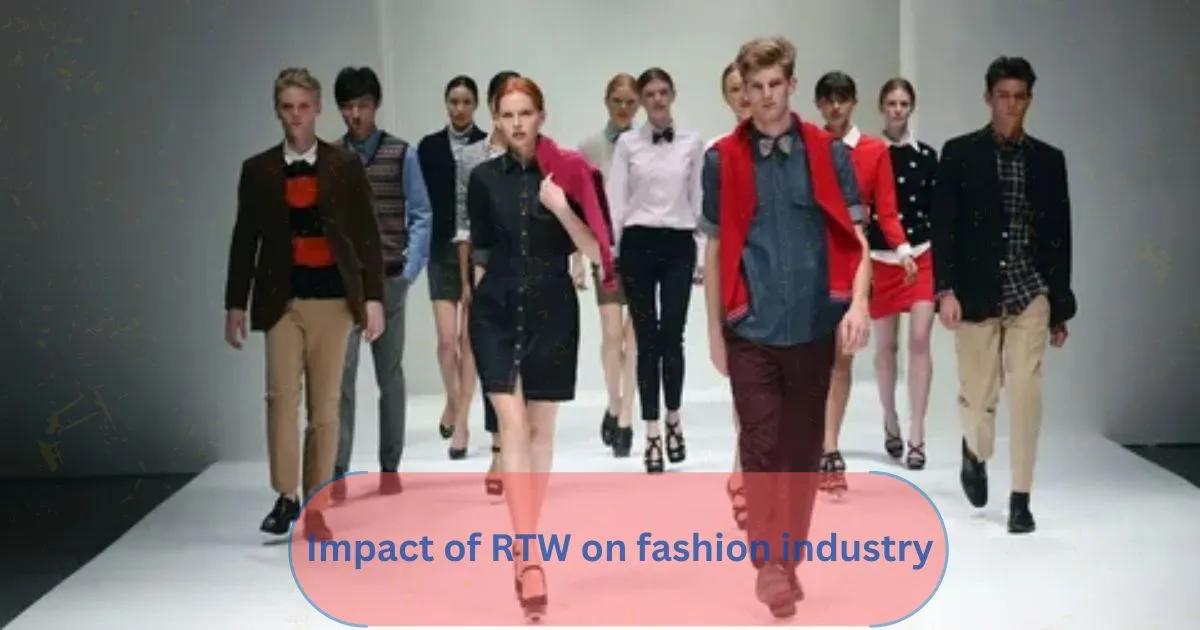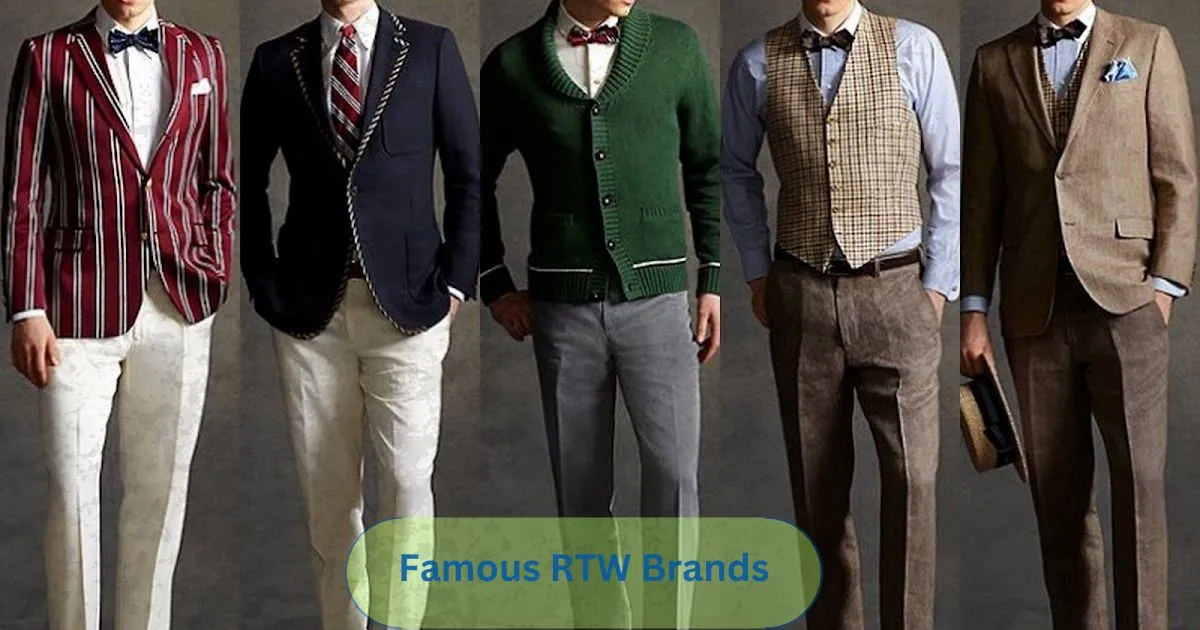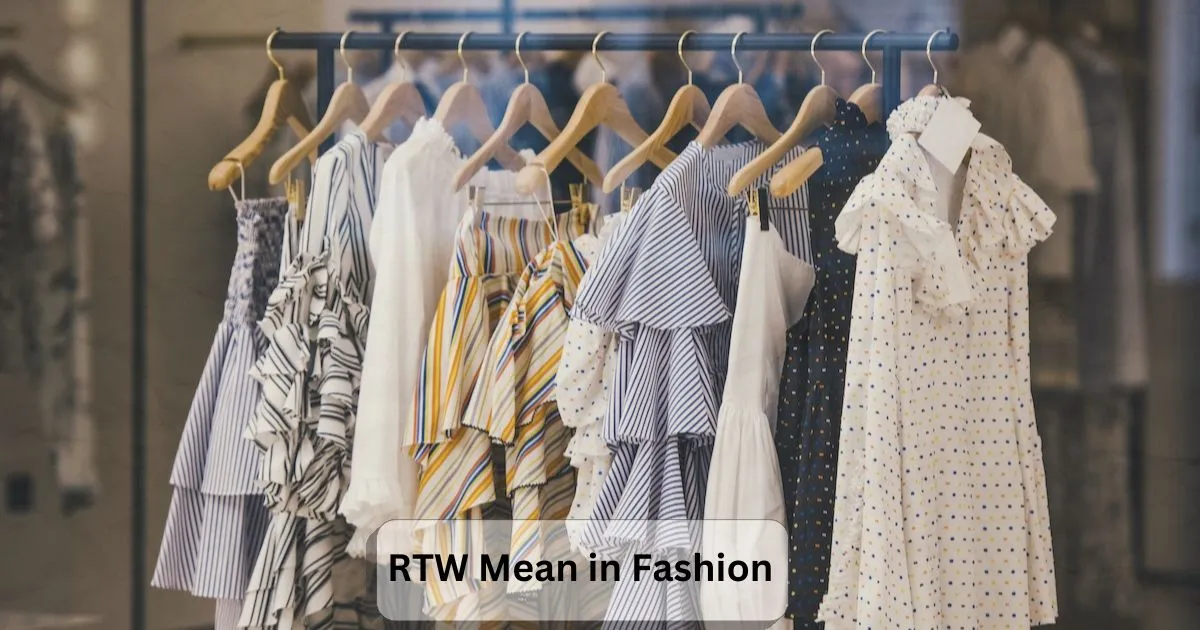What Does RTW Mean in Fashion?
RTW, brief for equipped-to-wear, is a period that frequently pops up in fashion conversations. But what does RTW mean in style? Simply placed, RTW refers to apparel industrially produced in standard sizes and sold in complete condition, equipped for the customer to put on without good-sized changes. This differs from high fashion, which is custom for a selected client.
The Expansion of Ready-to-Wear
From Bespoke to RTW
In the early days of fashion, maximum clothing became tailored, which means it was made to suit a personal capacity right. Tailors and designers created custom clothes for each consumer, which became prolonged and lavish. But as the Industrial Revolution took hold, the fashion enterprise saw a shift toward mass production. Factories started out generating garb in widespread sizes, making fashion extra available to the hundreds. This marked the delivery of ready-to-put-on style.
RTW Takes the Stage
It was in the 20th century that ready-to-wear entered into its ownership, as creators such as Coco Channel and YvesSaint Laurent brought about its idea. Chanel’s vision of creating stylish and easy dresses for women led to the popularity of her RTW collections. Similarly, Yves Saint Laurent’s Rive Gauche line brought high fashion to the everyday consumer, making RTW a basic in the fashion industry.
What Sets RTW Apart?
Standardized Sizing
One of the key functions of RTW is standardized sizing. Unlike bespoke apparel, which is tailored to suit a man or woman’s frame flawlessly, RTW garments are made in more than a few sizes to shape as many human beings as feasible. This standardization permits mass manufacturing, making RTW extra low-cost and handy.
Immediate Availability
RTW clothing is designed to be worn straight off the rack. There’s no waiting period or extensive fitting process. You can stroll into a store, attempt on a piece, and walk out with it, geared up to put on it without delay. This comfort is one of the important motives why RTW is so famous.
The Impact of RTW on the Fashion Industry

Democratization of Fashion
Ready-to-put-on has played a large position in democratizing fashion. It has made fashionable garb on hand to a much wider target market, breaking down the boundaries that when limited high style to the wealthy elite. With RTW, extra humans can experience the trendy traits and designs without breaking the financial institution.
Influence on Trends
RTW collections are a driving force behind fashion trends. Designers frequently showcase their RTW traces at some point in fashion weeks, and those collections set the tone for the upcoming seasons. Retailers quickly choose those developments, making them to be had by the general public. This rapid dissemination of trends is largely thanks to the RTW model.
FAQs about RTW
What Does RTW Mean in Fashion?
RTW stands for furnished-to-put-on and refers to clothes that are technically produced in public sizes, purchased in a finished nation, and ready to be used immediately.
How is RTW Different from Haute Couture?
While RTW is ready-made and available off the rack, high fashion is custom for individual clients. High-sewing garments are often more detailed and expensive and require multiple fittings and important time to create.
Why is RTW Popular?
RTW is popular because it offers comfort, economy, and availability. Consumers can purchase stylish clothing without the wait and expense of tailored or high-sewing garments.
Are RTW Clothes High Quality?
The quality of RTW clothing can vary widely. While some RTW words are produced by luxury brands and maintain high standards of quality, others may be more low-cost but less stable. It’s important to examine the brand and materials when purchasing RTW clothing.
What are Some Famous RTW Brands?

Many premium fashion houses and designers have RTW shapes, including Chanel, Gucci, Prada, and Louis Vuitton. There are also many popular average and reasonable RTW brands like Zara, H&M, and Uniqlo.
The Future of RTW
Sustainable Practices
As the fashion industry moves towards stability, RTW is also developing. Many brands are now focusing on tenable materials and moral production exercises. This shift is essential in addressing the environmental effects of fashion and ensuring a more viable future for RTW.
Technological Innovations
Technology is playing an important role in the future of RTW. Creations like 3D printing and digital design are changing the way RTW clothing is produced. These technologies allow for more accurate sizes, reduced loss, and faster production times, making RTW even more efficient and sustained.
Conclusion: Embracing RTW in Your Wardrobe
Information on what RTW means in fashion is vital for anyone involved in the industry. Ready-to-wear dress has changed the way we dress, making stylish clothing available to everyone. Whether you are shopping for a new cabinet main or following the latest trends, RTW offers a suitable and low-priced option. As the fashion industry develops, RTW will remain a key player, driving trends and making fashion more universal and sustained. So next time you’re shopping, remember the power of RTW and hold the advantage and style it brings to your clothes.
You can also read this
